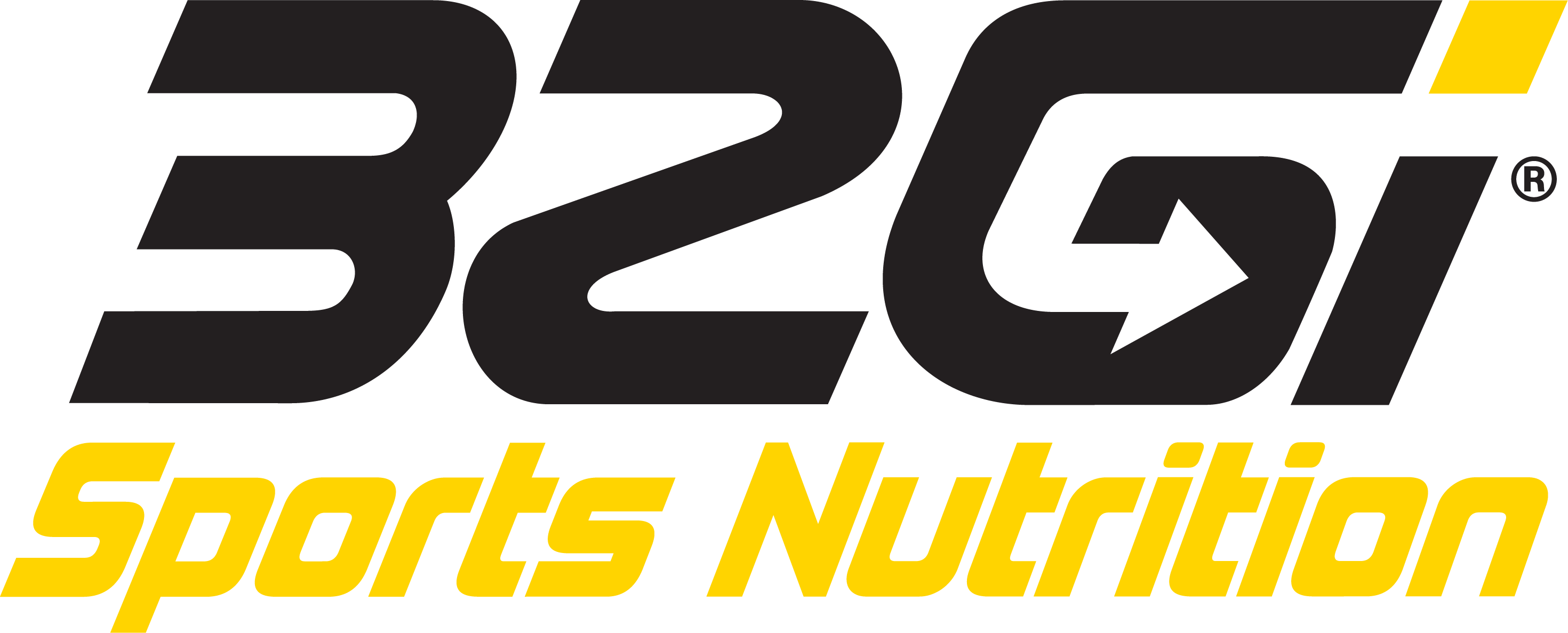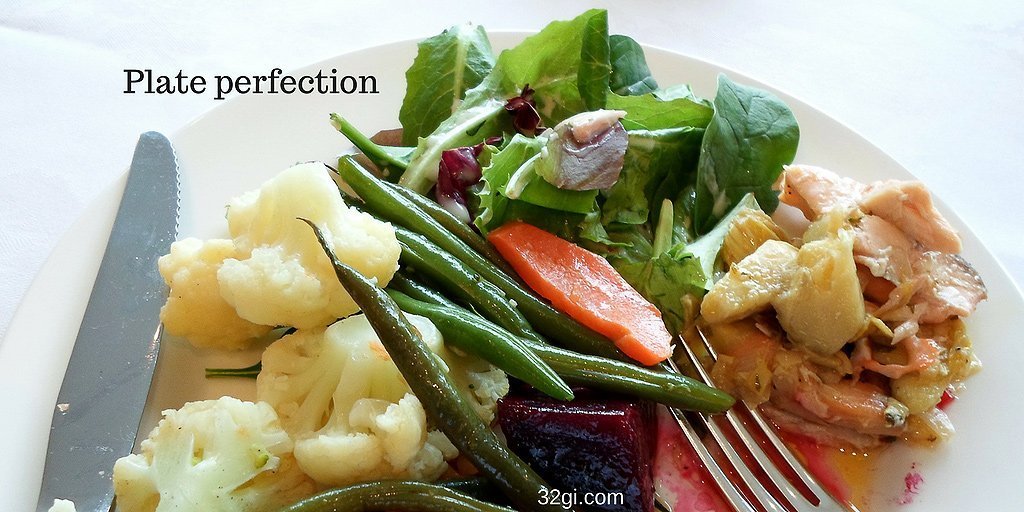2018 has arrived, and if you are still unsure how to plan your plate, Mark Wolff has a great strategy. Whether you’re an endurance athlete or not, planning your plate can have a huge benefit on your lifestyle. Don’t miss out on this episode of the 32Gi Sports Nutrition podcast!
Transcription:
This is 32Gi Sports Nutrition, I’m Mr Active, David Katz, joined by Mark Wolff. It’s a time of year when people do indulge, hopefully they’re still training and keeping active as well, but Mark Wolff on his blog site, The Fitness Freak had a fantastic post recently, and it was around planning your plate.
A lot of people don’t know the amount of carbs versus fat versus protein they need, whether they’ve had their session, and it can get very confusing when nutritionists talk about what you need and what is required. Mark has done a fantastic little breakdown of that for people Mark, basically, the motivation behind this latest blog of yours?
Mark Wolff: I think the motivation is that when I engage people on a regular basis, they fail to understand how to construct a meal properly and they tend to overcomplicate matters. I just thought, this is the simplest way to approach a meal, and actually construct it in the most-simplest manner. I think if people are guided in a simple and easy manner to understand what and how they should be constructing a meal. It will be far more beneficial and they’ll actually start making the correct choices.
DK: Mark’s blog, The Fitness Freak, you can view it online, I will put a link up, it’s a fantastic blog. He does come up with these motivated plans and things around everyday life. This one really did hit a point and made it really easy to break down. Talking about an easy breakdown, Mark, how do you break up your plate?
The importance of protein on your plate
MW: The first thing I always tell people is to start with your protein. There are various puzzle pieces to the plate, but let’s start with the protein, because that’s number one. The reason I say start with a protein is because protein is measurable.
Depending on the kind of athlete or the person that you are, you should be consuming a certain amount of protein per day. It could be anywhere between 1g to 1.7g per 1kg of bodyweight per person, up to, for an endurance athlete, 1.4 or 1.7g of protein per kg of body weight.
The thing is that if you’ve got that measurable, then you understand how much protein you should be consuming in a day. I weigh in the region of about 66/67kg, I consume anywhere between 85-95g of protein per day.
However, I know that protein cannot be absorbed in huge amounts of volume, the body has only got the ability to absorb specific amounts of protein at any one time. So that protein gets spread out, and I look to 20-25g of protein per serving, maximum and that should be spread out every three hours or so.
When I go to a plate, for example, if it’s one of my main meals, my protein servings are around the 20-25g mark, never more. If it’s a snack, it might be around the 8-15g of protein in a snack meal, but they are spread out through the day. Once I understand that, I can pick my protein and it’s very simple. If I want a protein of 25g, I just take one chicken breast, or a tin of tuna is probably around 20g, depending on the size of the tin, just to give you an example.
If you’re a vegan or a vegetarian, you need to understand how much protein is actually in [dual?] foods, being a carb, protein food etc, so it could be a grain, it could be a type of a vegetable etc, that has got a protein content but you need to understand what that protein content is.
Healthy Carbohydrates – why you need them
Once I’ve put the protein on the plate, I move to the next thing and I call this the healthy carbohydrate section. When I talk about health carbs, I talk about carbohydrates that have got a very low net carb portion. In other words, carbs are broken down into two things; you’ve got net carb and the gross carbs are basically including fibre.
If you eat a high fibre carbohydrate, the net carbs are usually a little bit lower. In that case I look at things like my green leafy vegetables, I look at spinach and kale, and the vegetables that are steamed such as broccoli, cauliflower and Brussels sprouts, all those kinds of things.
Even tomatoes and mushrooms and their low net carb content makes it very suitable to filling up a plate and you can eat quite a bit of that, feel satiated and it’s not going to make you gain weight or land up in any unhealthy state. In actual fact, those are very nutrient dense foods and they’re going to help you quite significantly from a health perspective, provided that you cook them correctly, of course.
How Healthy Fat plays a part on your plate
Once you’ve filled up the plate with that, move to the next macro and that is fat, healthy fat. When I look at healthy fat, I look at a small amount of fat to keep me satiated. I prefer plant based fats, remember, there’s two types of fats that you can get.
You get your saturated, which are your animal derived fats, unsaturated which are your plant based fats. I prefer advocating an unsaturated, higher unsaturated fat diet because I believe it’s far healthier. It’s also one of the reasons why it’s healthy for, if you’re going to pick a protein, try and pick a clean or lean protein, which has got a much lower fat content, that you can identify how much fat you’re going to be putting on your plate.
Very simple fats that I utilise quite often, you can look at olives, you can look at olive oil, you can look at flaxseed, you can look at chia seeds. You can look at things like sesame seed paste, avocado is one that I’ve also mentioned and it should be a measurable portion, but obviously not a large portion, because fat contains a high number of calories than in say a protein or a carbohydrate.
That’s generally how I construct my plate. Except then I have a look, and this is generally from an exercise or athlete perspective, then I look at what I call earned or deserved carbohydrates, and those are the carbohydrates that have a higher net carb portion, which do play an effect on blood sugar. In other words, they can cause a rise in insulin levels and those are the ones that generally create havoc when it comes to health and sometimes also performance.
How to earn extra Carbs on your plate
Then I have a look at that and I say to myself, all right, if it’s a recovery meal, how hard did I train, how long did I train for, do I deserve to put some of those carbohydrates into my plate in order to be able to assist me with recovery. Because maybe I did deplete my glycogen stores, maybe my blood sugar is a little bit lower than normal, and so maybe I do need to take those in.
That’s why I call them earned carbs. In other words, if you’ve earned them, then you can add them. The one thing you have to remember is that if you’re going to eat a higher amount of earned carbohydrates, you need to drop the fat content on the plate. You can’t have high fat and high earned carbs. The two do not go well together. It’s like a balance scale. The higher the earned carbohydrate content, the lower the fat content. The lower the earned carbohydrate content, the slightly higher the fat content, and you need to think about it in those terms.
Obviously if you haven’t trained significantly hard and you haven’t lost a large amount of glycogen due to exercise and your blood sugar is stable, there’s no need to go and overload your plate with what I called earned carbohydrates. Because you haven’t earned those carbs, so you don’t need to take them. If you can keep the fat content slightly higher, fat obviously does play a crucial role in the energy system, and it will keep you feeling satiated and it shouldn’t leave you feeling weak, tired or fatigued during the day.
A simple way to construct your plate
That’s a very simple way of constructing a plate. Start with a protein which is measured, start with your health carbohydrates which are nutrient dense, they help with the immunity, they help with strength, they help with performance and it definitely helps.
Once you put in those healthy carbohydrates, then you’ve got to try and determine the fat and the earned carbohydrate content. The truth of the matter is, is that you might not need both of them, or you might only need a little bit of one or the other, but you definitely don’t need to overload those two by any means. If you construct the plate in that manner, you will never go wrong.
DK: Mark, this category of earned carbohydrates, what would that be, what foods would you be looking at?
MW: As I mentioned, it’s higher net carbohydrates, but if I have to define what that is in terms of actual food, those are more your grains and your starches, as well as your fruit. Those have all got a much higher ability to affect blood sugar and definitely, I know that with most people, that’s what causes the weight gain. That’s why I say that needs to be earned.
DK: Awesome stuff Mark, I’ll put the link up again to that blog, The Fitness Freak site as well, it really is an interesting read, and you can see the pie chart, which also gives you a visual idea of how to make up that meal per food group and yeah, fantastic stuff, so do follow Mark Wolff. If you have any more questions as well, you can send those through to coach@32gi.com. From Mark and myself, Mr Active, David Katz, until next time.

